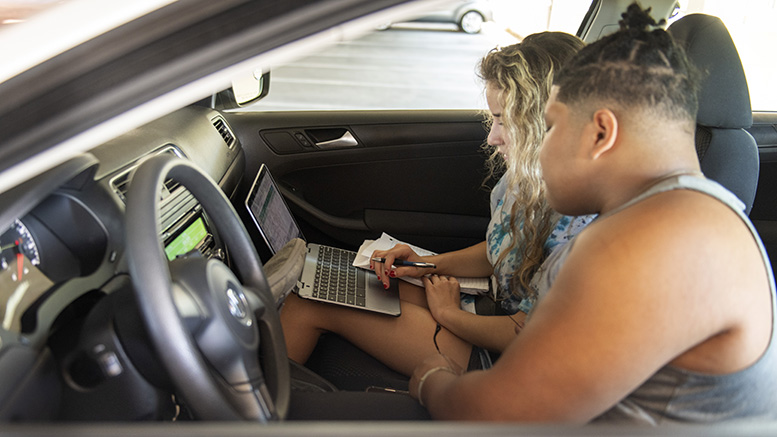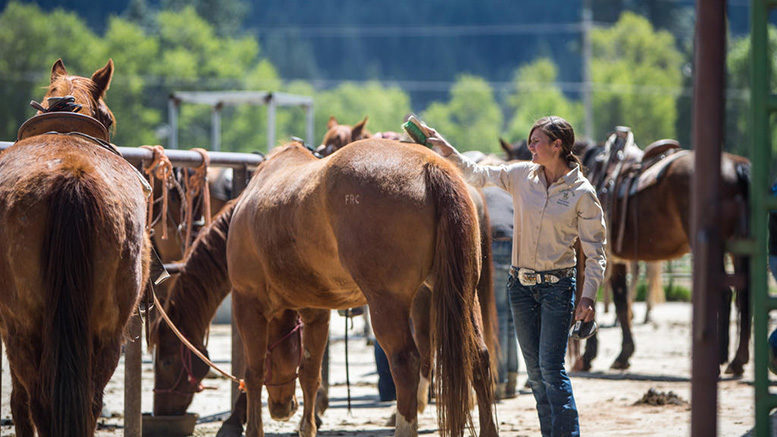Feather River College (FRC) is located in a rural county in a picturesque, wooded parcel of Northern California, boasting a unique learning atmosphere far removed from the bustle of city life.
The college’s relative seclusion has its obstacles, too — mainly unreliable internet that in today’s full-time distance-learning environment has forced students to use outmoded dial-up or access remote classes via cell phone or tablet. As classes switched online in the chaotic wake of the coronavirus pandemic, the relationship between the distance education and information technology departments has perhaps never been more vital.
This article is an excerpt from the current issue of Community College Journal, the flagship publication of the American Association of Community Colleges.
Two-year institutions nationwide are tackling the “new abnormal” with policies meant to ease students and faculty into a transformed academic setting.
FRC, with 25 faculty members teaching 900 on-campus students alongside a large prison and migrant population, features a trout hatchery and equestrian center in addition to regular classrooms and laboratories. A beautiful place to learn, if one distinctly challenged to serve its students during the viral crisis, notes President Kevin Trutna.
The college moved to online classes in mid-March, with a small IT team spearheading the changes with guidance from a dean of distance education. Harnessing the Canvas learning managing platform already in place, faculty provides curriculum through live video conferencing and previously recorded YouTube videos. Agriculture education — which specializes in equestrian and rodeo skills — is delivering some exciting outcomes as well.
“Our equine program is hands-on, so students and instructors are able to demonstrate riding techniques on a livestream,” Trutna says. “One instructor said it’s caused students to think at a higher level, because they’re being watched and commented on by other students. They’re a little more deliberate.”
Connecting every student to chancy satellite internet represents the institution’s toughest test, Trutna adds. Besides a considerable prison-based enrollment, FRC has students living on a Navajo reservation. During the pandemic, students — and even some instructors — have been grabbing free wifi from the library parking lot on their mobile devices.
Trutna and his homebound colleagues are working with IT to connect to FRC’s virtual private network, either through laptops or specially provided miniature PCs.
“We have two people in our IT department: a PC specialist and a webmaster,” he says. “IT worked overtime to make sure everyone had access to our system. My PC needed to get logged in and our IT guy stepped up so I was good to go.”
Rolling with the changes
At first glance, Collin College in McKinney, Texas, may appear on the opposite end of the academic spectrum from rural Feather River College. With nine sites serving 60,000 students, the college transitioned 3,100 classes online March 20, launching the new programming a week later.
However, the campus closure exacerbated a “digital divide” where some learners were less likely than others to have consistent access to reliable technology. In response, Collin College opened a designated drive-in wifi space, where students swipe an ID card and take virtual classes in a covered parking garage.
“There’s wifi antennas in the garage for high-speed access,” says Chief Innovation Officer Michael Dickson. “It’s not perfect, but students don’t have to sit in the hot sun.”
A pre-pandemic online learning push, driven by administrators including President Neil Matkin, already offered 900 remote classes as well as an Electronic Learning Center (ELC) that provides labs, academic advising and other 24/7 resources.
“We adopted Canvas a couple of years back and require faculty to post syllabi and class materials on the platform,” Dickson says. “We had a head start on a lot of this, so that paved the way for making the transition.”

As for increased remote testing demands, the college is using the HonorLock online proctor service after starting a pilot in January. Faculty members also are familiar with tools that allow for hands-on engagement and visualization of various lab exercises. Tech specialists who normally patrolled the classroom are now staffing a student information desk, offering callers assistance on any technological need.
“A high-tech, high-touch approach has made a huge difference for enrollment,” Dickson says. “I expected enrollment to crater, but the percentage of drops is consistent with what we have every semester. If we didn’t have these aggressive measures, I shudder to think what it would’ve taken to move that amount of classes in so short a time.”
Dickson lauds president Matkin for laying the groundwork for the pandemic-generated changeover, an effort fueled by a patient staff who underwent one-on-one training from IT on tools with which they were unfamiliar.
Outside the occasional “Zoombombing” — a type of cyberattack where someone hijacks a Zoom teleconferencing chat — security hasn’t been an issue in the college’s brave new academic world. Combining heightened training and mentoring with enhanced security protocols has kept both students and instructors safe. Dickson is proud of the tech services department whose role has expanded since March, not to mention faculty that have remained agile even as teaching protocols developed.
“You can fall into a pattern when in higher education for so long,” Dickson says. “But the old rules are over, and now we’re exploring some new ones. Faculty found that extremely liberating, even those who never thought they’d teach online. It’s a challenge, but we couldn’t have done this without the enthusiasm of our faculty.”
‘Do the next right thing’
As the pandemic continues, community college instructors are collaborating on online pedagogy best practices. At Feather River College, faculty held weekly virtual curriculum meetings, later introducing a blog where they shared ideas. For example, outdoor recreation leaders posting avalanche patrol videos as a visual aid for online learners.
Meanwhile, an English and literature professor replaced static web-based postings with videos, further substituting in-person student meets with open-classroom office hours. Real-time interaction quickly became preferable to writing and outlining notes on the LMS.
“He missed personal interaction the most,” FRC’s Trutna says. “He tried to include every portion of his guidance, but then realized that live-time interaction and human contact — even if it was sharing videos — was more important to the subject than getting all of the content perfectly defined. From the college’s standpoint, we took care of the technical needs, handholding to get people to a baseline level. People excelled in what they were doing as the process went on.”

